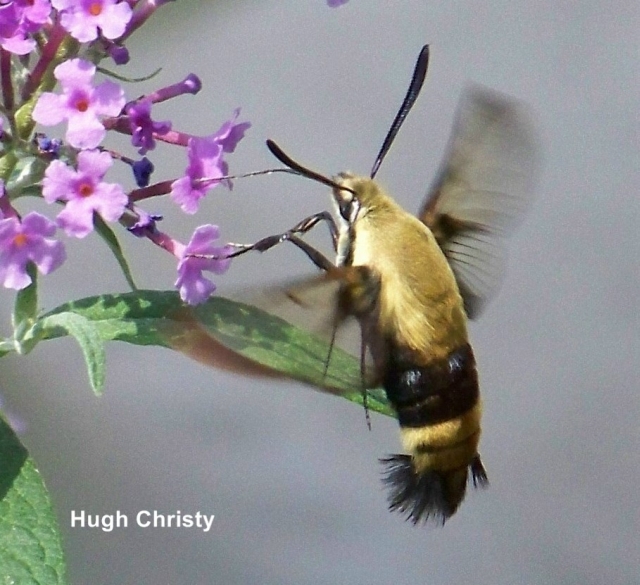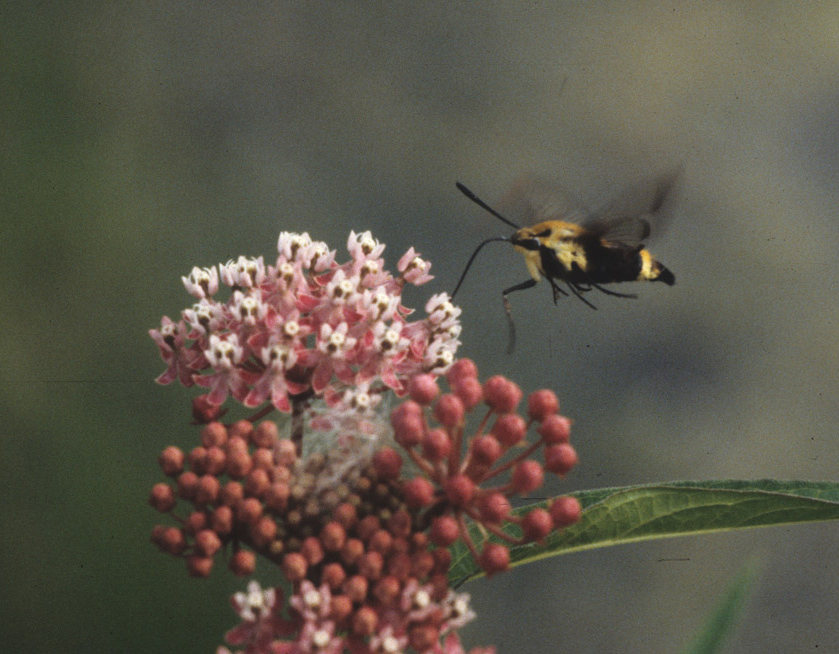Hummingbird Moth (Hemaris spp.)
By Beatriz Moisset
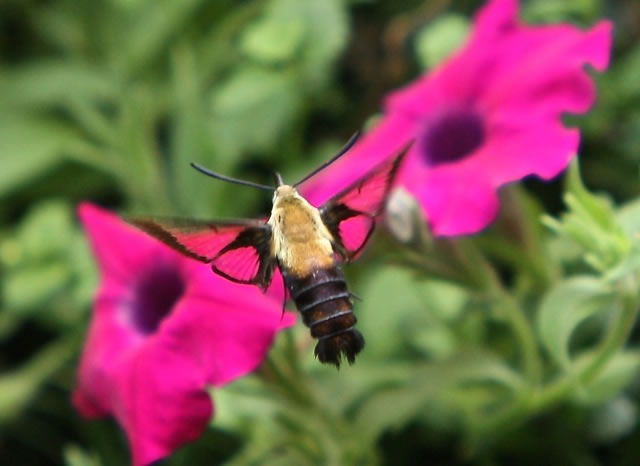 Snowberry clearwing moth (Hemaris diffinis). Photo by Carl Pelzel.
Snowberry clearwing moth (Hemaris diffinis). Photo by Carl Pelzel.
Perhaps one of the most delightful insect visitors to your garden is the hummingbird moth. Several species of the genus Hemaris deserve this name and for very good reason. They fly and move just like hummingbirds. Like them, they can remain suspended in the air in front of a flower while they unfurl their long tongues and insert them in flowers to sip their nectar. They even emit an audible hum like hummingbirds. Quite often inexperienced garden visitors notice what they think is a tiny hummingbird fleeting among flowers such as bee balm (Monarda). They listen incredulously when one explains to them that what they just saw was not a bird but a moth.
Hummingbird moths are rather plump; the tip of their tail opens into a fan. They are usually of a rich reddish brown color, at least in part. Like all Lepidoptera their wings are covered by scales; some species lose many of the scales from patches on their wings, so they are called clearwing hummingbird moths. Like most moths they have a very long tongue which they carry rolled under their chins and that they use to reach the nectar of long-necked flowers. Such nectar is inaccessible to many other flower visitors, so it seems that these flowers prefer long tongued pollinators and try to keep the others away.
These day-flying moths are widespread in North America. In the Old World, there are several species of hummingbird moths. Some of these species are closely related and all belong to the same genus, Hemaris. The British prefer to call them Bee Hawk-Moths. There are four species of hummingbird moths in North America. The most familiar ones are the Snowberry Clearwing (Hemaris diffinis) and the Hummingbird Clearwing (Hemaris thysbe). They are both widespread throughout North America, with the former perhaps being more abundant in the west and the latter in the east. Like the majority of moths and butterflies, the adult hummingbird moths feed on nectar from a variety of flowers, but their larvae need more specific food plants, such as several species of honeysuckle, dogbane, or some members of the rose family such as hawthorn, cherries, and plums.
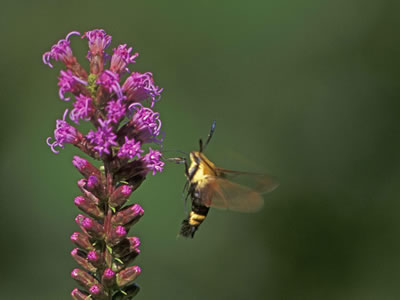 Hovering like a hummingbird this snowberry clear wing moth (Hemaris diffinis) is sipping nectar from a blazing star (Liatris spicata). Photo by Tom Barnes.
Hovering like a hummingbird this snowberry clear wing moth (Hemaris diffinis) is sipping nectar from a blazing star (Liatris spicata). Photo by Tom Barnes.
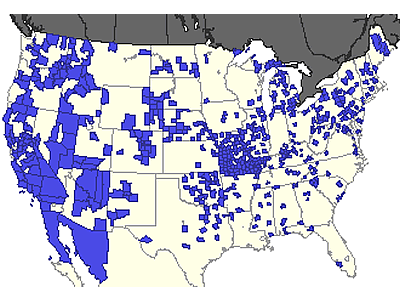 Distribution map of Hemaris diffinis. Courtesy of Butterflies and Moths of North America.
Distribution map of Hemaris diffinis. Courtesy of Butterflies and Moths of North America.
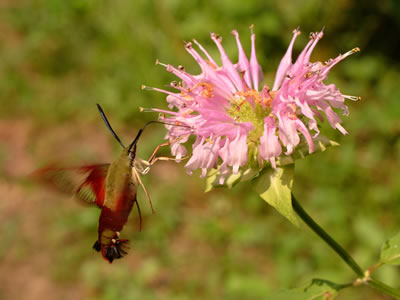 The red coloration on this hummingbird moth readily identifies it as a hummingbird clear wing (Hemaris thysbe). Here it is nectaring on a beebalm (Monarda fistulosa). Photo by Bob Judson.
The red coloration on this hummingbird moth readily identifies it as a hummingbird clear wing (Hemaris thysbe). Here it is nectaring on a beebalm (Monarda fistulosa). Photo by Bob Judson.
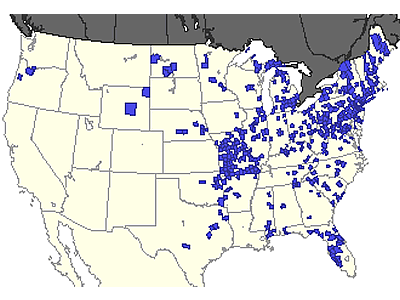 Distribution map of Hemaris thysbe. Courtesy of Butterflies and Moths of North America.
Distribution map of Hemaris thysbe. Courtesy of Butterflies and Moths of North America.
The adults may start flying in early spring, when the bluebells (Mertensia) are still blooming; but you will have a better chance to see them when they are most active, in the summer when the bee balms are in bloom. If you have phlox (Phlox), beebalm (Monarda), honeysuckle (Lonicera) or verbena (Verbena) you are also likely to see these wonderful insects visiting these flowers.
The females entice the males with an aroma or pheromone that they produce from glands at the tip of the abdomen. After mating, they lay their tiny, round, green eggs on their larval food plants, usually on the underside of the leaves. The caterpillars have a horn at the rear end and are commonly green, well camouflaged among the leaves. When they are fully-grown they drop to the ground, spin a loose cocoon and pupate, partially protected by leaf litter. That leaf litter so hated by some gardeners provides a shelter to this beautiful pollinator. In the north, where the season is short there is only one generation per year; the pupa spends the whole winter well hidden and the adult does not emerge until the next spring. In the south, there is usually more than one generation each summer.
For Additional Information
- Butterflies and Moths of North America: Snowberry clearwing, Hemaris diffinis
- Butterflies and Moths of North America: Hummingbird clearwing, Hemaris thysbe


